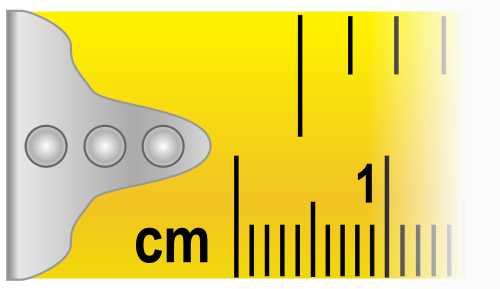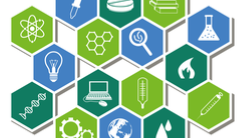Teacher Tips!
Many activities have a teacher view and a student view, and teachers can switch between those views by clicking the blue button in the upper-right. Students will not see this option - only teacher accounts see both views. The teacher view will start with overview text, if available, to frame the activity and get you started. This view will also have teacher tips and suggested answers to student questions spread throughout the activity. The teacher text interleaved with student-facing text will be in italics and should appear as a different color on your screen. Teacher tips are designed to help you deliver a learning experience that is best suited for your classroom.
Printing Reminder
Whichever view you see on your screen is what will print. You can print this activity without teacher tips by selecting the student view, or print with teacher tips by switching to teacher view. Simply use the standard print function available for your web browser. No extra steps are required.
1. You are measuring a distance using a tape. To what constant is the measure of distance associated?
- C Speed of light x
- H Planck’s constant
- S Second
- e Amperes
2. Suppose a historian tried to replicate the Earth measurements of the ancient Greeks today. On what standard for distance would they rely?
- C Speed of light x
- H Planck’s constant
- S Second
- e Amperes
3. Centuries ago, navigators determined their location by the declination of the sun (height in the sky.) Today they determine their location by instruments that rely on:
- Charge
- Light
- Mass
- Time x
4. The mass that was once maintained in Paris to serve as a standard for mass has been replaced by:
- A balance
- An interferometer
- A constant x
- A protocol for measurement
5. In the past century, the kilogram mass artifact maintained in Paris as a standard has lost about 50 micrograms—the mass of an eyelash. What effect would this have on scientific research?
- It would make measurements less precise.
- It would make measurements less accurate. x
- It would force changes in other standards.
- Measurements would be more precise but less accurate
6. All of the satellites and ground stations that contribute to our Global Positioning System are coordinated using the same master clock. This coordination contributes to:
- Accuracy
- Precision x
- Significance
- Stability
7. Metrologists worked to create a near-perfect sphere of silicon. The purpose of this experiment was to establish a standard for:
- The kilometer
- The mole x
- The candela
- The ampere
8. The triple point of water was once a standard for temperature. It has been replaced by:
- An absolute measure of energy x
- The evaporation rate of water
- The value of a mole of water
- The mass of a kilogram of water.
9. Which of the common units is actually a prediction about a perfectly pure substance?
- Kelvin
- Mole x
- Candela
- Ampere
11. Scientists in Chile and California are looking at the effects of light pollution on bird migration. What unit would be most important as they share results?
- Candela x
- Ampere
- Mole
- Kelvin
12. To exert precise levels of torque on the fasteners for a space vehicle, the engineers use measurements in newton-meters. To which of the constants is this unit related?
- Light and time
- Distance and mass x
- Current and temperature
- Light and moles
13. The Kibble balance relies on the use of ______ as a standard.
- C Speed of light
- H Planck’s constant x
- S Second
- e Amperes
14. In the near future, metrologists hope that Kibble balances will be widely available for international research and industrial development. What would this accomplish?
- More rapid production
- Greater accuracy x
- Less loss due to errors
- Greater innovation
15. Laboratories around the world coordinate their efforts to develop a new vaccine. Why might they consult international metrology agencies?
- To test their potential product for safety
- To standardize measurement across lines x
- To evaluate the optimal concentration
- To rate performance of the equipment
16. Which professional would be most likely to consult a metrologist?
- The business manager of a health system
- A software engineer developing a video game
- A systems engineer building a medical device x
- An artist proposing a massive mural
17. What is the greatest advantage of moving from physical artifacts to constants as standards of measurement?
- The calculations are simpler and more straightforward.
- The measurements are easier to complete.
- Measurements are consistent over time and space. x
- The mathematics of the measurements is clearer.
18. What is the most common career path for a metrologist?
- Architectural engineering
- Science and mathematics x
- Business and finance
- Government systems
19. Which of the standards used by metrologists is the largest number?
- Avogadro’s number x
- speed of light
- Planck’s constant
- Boltzmann Constant
20. The chief way that metrology supports future innovation is by enabling:
- Collaboration x
- Regulation
- Imagination
- Publication
Matching
Which unit of measurement would be most important for precise measurements to answer these questions?
| Unit |
| Candela |
| Ampere |
| Kilogram |
| Kelvin |
| Second |
| Mole |
| Meter |
| Research question |
| What levels of solutes affect the taste of a cityâs water supply? mole |
| What stage in its life cycle is a newly-discovered star? kelvin |
| Can we develop a nano-structure to deliver a new drug ? meter |
| What is the maximum payload possible on a deep space probe? kilogram |
| How could the output of a solar array be improved ? ampere |
| How can the accuracy of the tsunami warning system be improved? second |
| How has climate change affected the albedo of the polar ice caps? candela |










